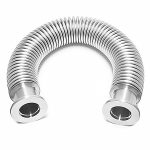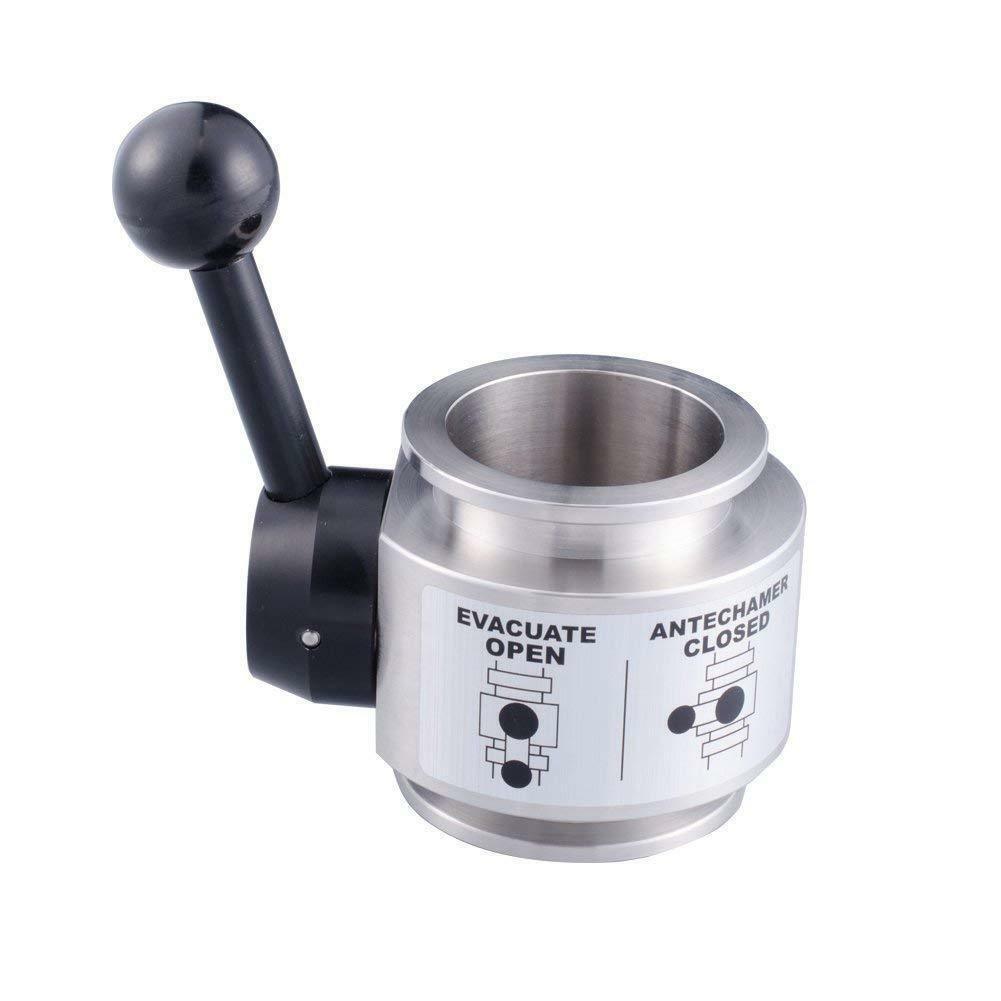
Viton-O-ring
Fluororubber refers to a synthetic polymer elastomer containing fluorine atoms on the carbon atoms of the main or side chain. Polyolefin-based fluorine rubber includes fluorine rubber-23, fluorine rubber-26, fluorine rubber-246, tetrapropylene fluorine rubber, G-type fluorine rubber, and the like. Fluorine rubber has the characteristics of high temperature resistance, oil resistance, and resistance to a variety of chemicals. It is an indispensable material for modern science, technology, and other industrial fields such as aviation, missiles, rockets, and space navigation.
1.Fluorine rubber-23
Fluorine rubber-23 Also known as 23-type fluorine rubber, its scientific name is vinylidene fluoride-trifluorochloroethylene copolymer, and its English name is fluororubber23. CAS registration number [9010-75-5], raw rubber is white or amber film, non-toxic, odorless, non-flammable (self-extinguishing). It has a molecular weight of 500,000 to 1 million, a glass transition temperature of about 0 ° C, a brittleness point of -20 to -40 ° C, and is soluble in organic solvents such as low molecular aldehydes, ketones, and esters. Fluorine rubber has outstanding resistance to oxidation media (such as fuming sulfuric acid, nitric acid, hydrogen peroxide, etc.), good heat resistance (long-term use temperature 200 ℃, short-term 250 ℃), satisfactory dielectric properties, physical and mechanical properties ( Tensile strength is 10.8 ~ 24.5MPa, elongation at break is> 500%, Shore A hardness is 50 ~ 80 degrees), and it also has excellent characteristics such as weather resistance, ozone resistance, radiation resistance, and low water absorption.
Fluorine rubber-23 is suitable for producing various heat-resistant, medium-resistant, strong oxidant-resistant rubber hoses, diaphragms, seals, wire sheaths, anti-corrosion linings, tape products, etc.
2.Fluorine rubber-26
Fluorine rubber-26 is also known as 26-type fluorine rubber, scientific name is vinylidene fluoride-perfluoropropylene copolymer, English name is fluororubber26. CAS accession number [9011-17-0], raw rubber is white or amber film, non-toxic, odorless, non-flammable (self-extinguishing). It has a molecular weight of tens of thousands to hundreds of thousands, a brittleness point of -40 to -50 ° C, and is soluble in low molecular ketones and esters. Fluoro rubber-26 has excellent heat resistance (long-term use temperature of 250 ° C, short-term 300 ° C), compression resistance, mechanical strength (≥12.0MPa before aging, ≥10.0MPa after aging,) and good medium resistance. Fluoro rubber-26 is resistant to organic solvents and concentrated acids, and is slightly inferior in resistance to diester oils and phosphates. Its resistance to strong oxidants is not as good as fluorine rubber-23 and fluorine rubber-246. Due to the different viscosity of the glue, its performance is slightly different.
Fluorine rubber-26 is mainly used for sealing products such as high temperature resistance, oil resistance, and medium resistance, such as hydraulic systems, lubrication systems, bearings and transmission pipe joints of various machinery. Secondly, it is used to make various hoses, such as aircraft fuel pipelines, hot air pipes, high temperature and pressure, and liquid hoses. High-viscosity adhesive has high temperature strength, good compression set performance, and is suitable for molding. Medium viscosity rubber has good processing performance and is suitable for complex products for extrusion or molding. Wide molecular weight adhesives such as 26D, K-60 have excellent compression set properties. Low-viscosity adhesives have good processability, and can be used as high-concentration solution coatings. They can also be used in combination with high-viscosity adhesives to improve processing performance.
3.Fluorine rubber-246
Fluoro-rubber-246 is also known as 246-type fluororubber. Its scientific name is vinylidene fluoride-tetrafluoroethylene-perfluoropropylene copolymer, and its English name is fluororubber246. CAS accession number [25190-89-1], raw rubber is white or amber film, non-toxic, odorless, non-flammable (self-extinguishing). It has a molecular weight of about 120,000, a brittleness point of -45 to -55 ° C, and is soluble in low-molecular-weight ketones and esters. Fluoro rubber-246 has outstanding high temperature resistance (the highest working temperature is about 20 ° C higher than fluororubber-26) and liquid resistance (resistance to diester oils and phosphate esters is better than fluororubber-26), and has good chemical stability. Resistance (corrosion resistance to sodium hydroxide and nitric acid) and physical and mechanical properties (tensile strength 15.7 to 17.6 MPa, elongation at break 310% to 390%). Similar to fluorine rubber-26, due to the different viscosity of the rubber, its performance is slightly different.
Fluorine rubber-246 is mainly used to manufacture high temperature, oil, and corrosion resistant rubber products, such as various seals, hoses, and tapes. Its seals can be used for static or dynamic sealing of engines, high temperature resistant seals of deep oil well equipment, etc. Its hose can transport a variety of fuels, lubricants or corrosive media.
4. PTFE
Tetrafluoroethylene rubber scientific name is tetrafluoroethylene-propylene copolymer elastomer, English name tetrafluoroethylene-propylene rubber, tetrafluoroethylene-propylene copolymer, CAS registration number [27029-05-6], raw rubber is white or amber film, non-toxic, non-toxic Smell, flame retardant (self-extinguishing). Has excellent chemical stability. It has high corrosion resistance to inorganic acids, alkalis, various types of bleaching agents, superheated water and steam, especially steam mixed with acids and alkalis, and phosphate ester hydraulic oil. It can work for a long time below 230 ° C (decomposition temperature> 400 ° C), and its low temperature performance is slightly worse (static -40 ~ 230 ° C, dynamic 0 ~ 230 ° C). Tetrafluoropropylene rubber can be vulcanized with dicumyl peroxide-triallyltriallyl vulcanization system. It also has processing performance that is unmatched by other fluororubbers.
PTFE has excellent characteristics, is suitable for compression processing, and is easy to be extruded. It is widely used in aerospace, aviation, oil fields, automotive, electrical, chemical, food, textile and other industrial sectors. Its products include a variety of acid-resistant, corrosion-resistant, water-resistant rubber hoses, seals, “O” rings, gaskets, diaphragms, and so on.
5.G series fluorine rubber
G-type fluorine rubber is based on fluorine rubber-26 or fluorine rubber-246, and introduces a small amount of fluorine-containing monomer that can provide a crosslinking center on its main chain. It uses organic peroxides and must be equipped with a co-vulcanizing agent. An improved new type of fluororubber cured by triallyl triisocyanate (TAIC) system. G type fluorine rubber has a fluorine content of 69%. Compared with rubbers cured by amine vulcanization system and bisphenol vulcanization system, it has better water resistance, water vapor resistance, better solvent resistance, and fuel oil resistance. And chemical resistance. If the swellability in methanol is 2% (25 ° C × 7d), it has excellent resistance to new mixed gasoline (containing benzene and alcohol). After vulcanization with an organic peroxide system, there are fewer volatile insoluble by-products.
Polyolefin-based fluorine rubber has many varieties, good product performance, and has the characteristics of high temperature resistance and strong corrosion resistance. After decades of improvement, new types of fluororubbers and compounding auxiliaries (vulcanizing agents, co-vulcanizing agents) have continuously appeared, improving the processability and making them increasingly used in various military and civilian products.
View more vacuum bellows with low price and free shipping all over the world.






